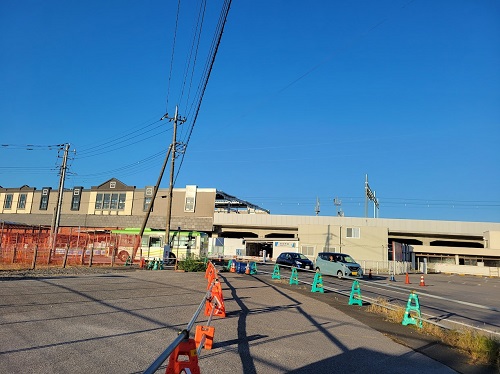
東武アーバンパークライン野田市駅
Noda City Station of Tobu Urban Parkline |
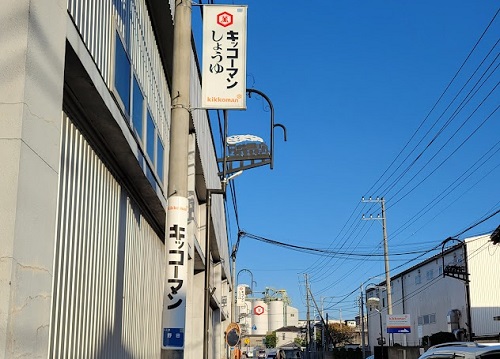
野田市駅付近から望む工場と電柱の標識(キッコーマン一色だ)
Kikkoman_Shoyu Pant viewed from a lane near Noda City Station (with signboards full of Kikkoman's logos) |

駅前に林立するしょうゆ工場のタンク(右手が工場への入り口)
Huge tanks of shoyu standing in the plant (Right is an entrance into the plant.) |

微かにしょうゆの香りが漂う工場の敷地。
We can smell shoyu slightly when we step in the entrance. |
 |
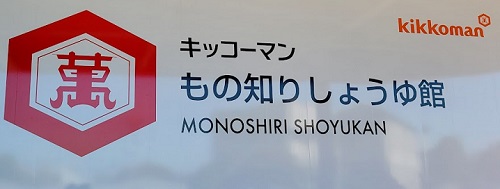 |

見学施設「もの知りしょうゆ館」内部
Inside of the facility named "MONOSHIRI SHOYUKAN" providing information on shoyu production |
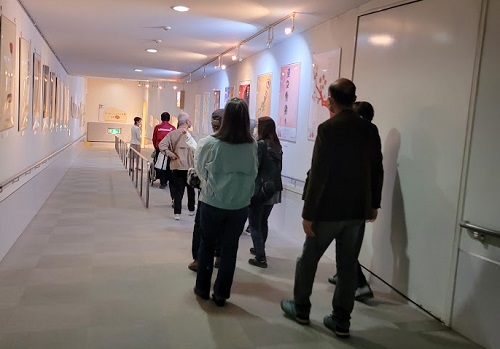
キッコーマンのガイドの後に従って見学路を行く「キヨ友の会」のメンバー。
Members of "Kiyo Fan Club" are walking along the plant's tour course behind a guide of Kikkoman. |
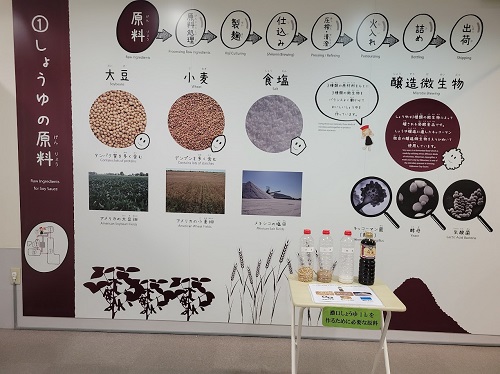
しょうゆの製造過程を説明する大きなプレートが並ぶ。先ずはしょうゆの原料(大豆・小麦・食塩)から。実物が製品と共に展示されている。
Large plates describing the procedure of shoyu production are
displayed: the first one shows the three essential materials for
producing shoyu--soybeans, wheat, and salt. |
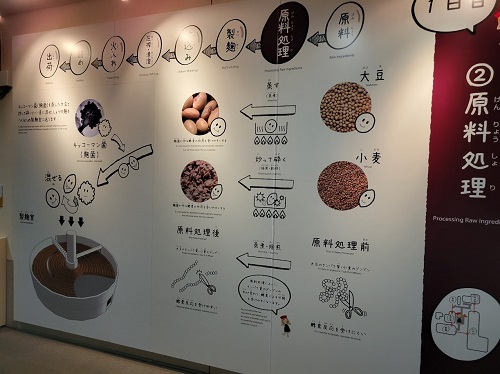
次に示されるのは「原料処理」。誰が見てもよく分かる図式で、解説も軽快だ。
The next plate shows how these raw materials are treated.
Illustration is very clear for anyone to follow the procedure. |

しょうゆの製作工程<原料>→<原料処理>→<製麹>→<仕込み>→<圧搾・清澄>→<火入れ>→<詰め>→<出荷>のうち、原材料に「麹」を加えて仕込みを行うところが詳しく説明されている。
In the procedure of shoyu production, how moromi (unrefined soy-sauce; the mixture of malt and salt water) is added to the raw materials is depicted. |
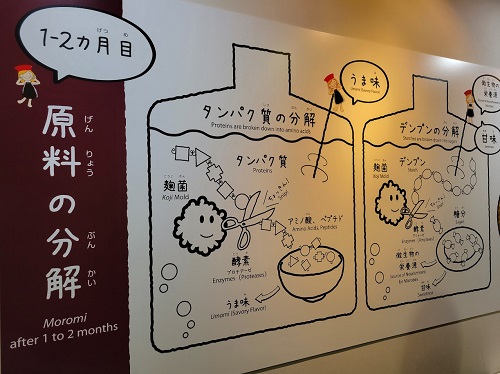
原料の分解過程初期(1-2ヶ月目)の図示。
As the plate says, it illustrates "Moromi after 1 to 2 months". |

デンプンの糖質への転換を説明する図。
Illustration of conversion of starch into sugar. |
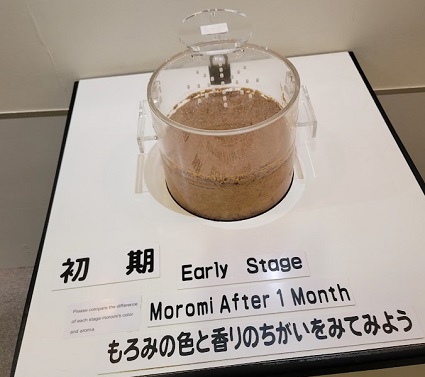
初期のもろみが実物で展示されており、見学者は色や香りを実感できる。
The early stage of Moromi is displayed so that visitors can see and smell the real material. |
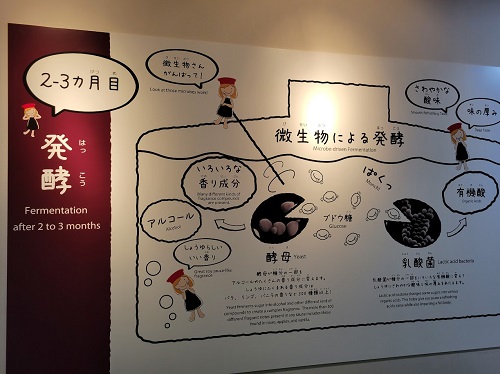
2~3ヶ月目の「発酵段階」の説明。
Fermentation after 2 to 3 months. |
 |
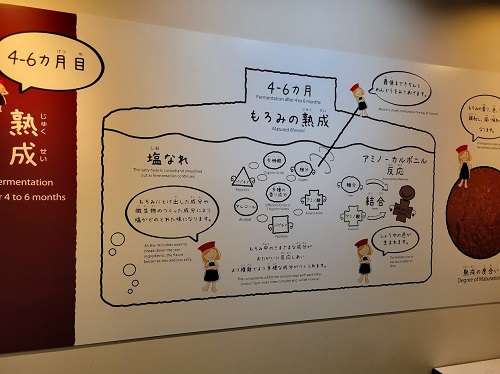
4~6ヶ月目の「熟成期」の説明。
Fermentation after 4 to 6 months. |
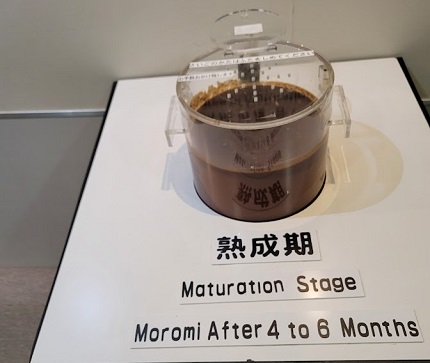
熟成期ともなると大分色が黒くなってきた。(しょうゆ色だ!)
The color of the material is darkened in the maturation stage. |
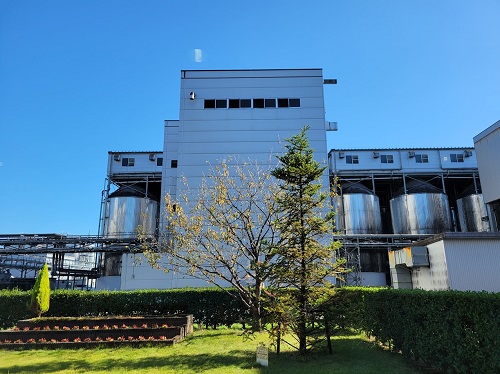
工場見学施設内から見るしょうゆタンク。
Tanks of shoyu viewed from "Shoyu Mnoshiri-kan." |

樽、缶、瓶、プラスティックボトルなど、歴代の製品が並ぶ。
Shoyu containers in history: barrels, cans, glass bottles, and plastic bottles are displayed. |

多種多様な製品には海外の食品文化の事情に応じた配慮も見られる。
Among the variety of containers and labels, we can see considerations to various cultural differences of the world. |

キッコーマンの海外拠点を示す地図。
A map showing Kikkoman's branches abroad. |

幅広いキッコーマンのしょうゆ製品のラインアップ。
A vast lineup of the shoyu products of Kikkoman. |

「御用醤油醸造所」なる建物が別棟として公開されており、そこではオートメーション式ではなく伝統的な手法で宮内庁に納める醬油が作られ続けている。
Outside of the main building of "Shoyu Mnoshiri-kan," there is a classic Japanese style building "Goyou Shoyu Brewery" which produces the special kind of shoyu for the Imperial Household Agency. They keep producing shoyu not in an automatic system but in the traditional manual method. |
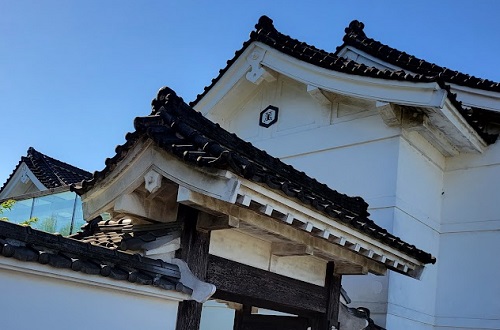
「御用醤油醸造所」なる建物が別棟として公開されており、そこではオートメーション式ではなく伝統的な手法で宮内庁に納める醬油が作られ続けている。
Outside of the main building of "Shoyu Mnoshiri-kan," there is a classical Japanese style building "Goyou Shoyu Brewery," which produces the special kind of shoyu for the Imperial Household Agency. They keep producing shoyu not in an automatic system but in the traditional manual method. |

「御用醤油醸造所」の門
The gate into "Goyou Shoyu Brewery" |
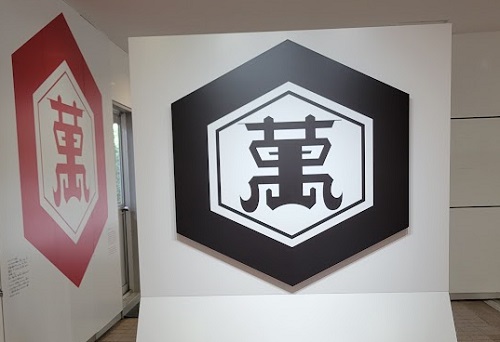
キッコーマンの漢字ロゴ(亀の子マーク)
Logos of Kikkoman ("kikkou" means the shape of turtles.) |

アメリカ向け英語表記のラベルデザイン
A Kikkoman's label for the market in the United States. |
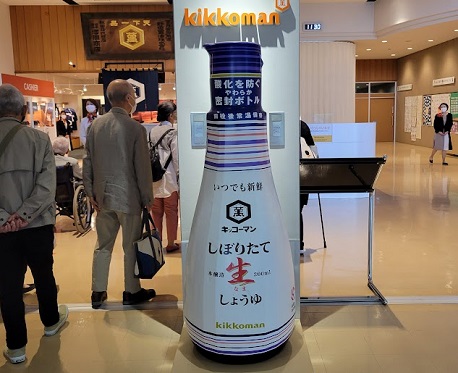
土産売り場前にある特大の生しょうゆボトルのディスプレイ。
A large replica of pure soy sauce placed in front of a souvenir shop. |
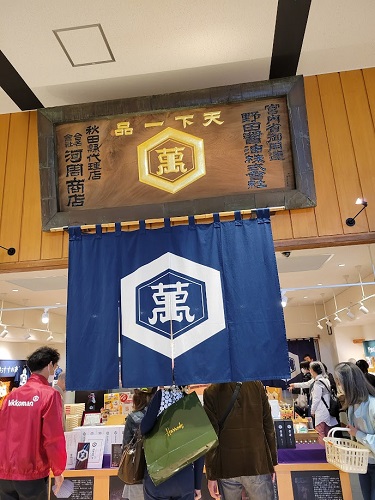
土産売り場入口にかかる、古い醤油屋の看板とキッコーマン印の付いた暖簾。「キヨ友の会」メンバーもお土産を買い物中。
An antique signboard of a shoyu shop and a store curtain printed with the Kikkoman brand mark. Members of Kiyo Fan Club are shopping at the souvenir store. |

ポピュラーな卓上しょうゆ瓶(の特大ディスプレー)。
A large replica of the popular glass shoyu bottle. |
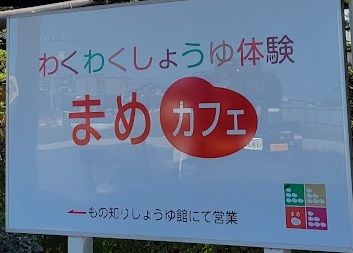
「もの知りしょうゆ館」の中には「まめカフェ」という喫茶コーナーがある。
”Mame Cafe” is locatd inside of "MONOSHIRI SHOYUKAN." |
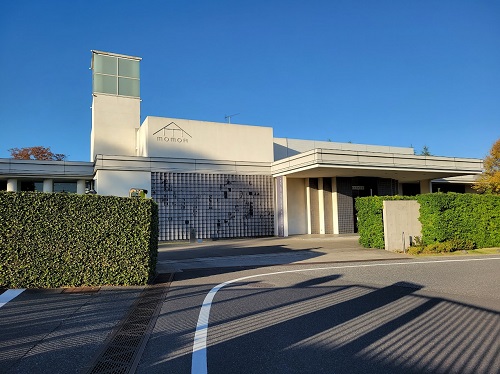
しょうゆ工場から徒歩圏内にある「茂木本家美術館」。
MOMOA (MOGI-HONKE MUSEUM OF ART) is in a walking distance from Kikkoman Shoyu Plant. |
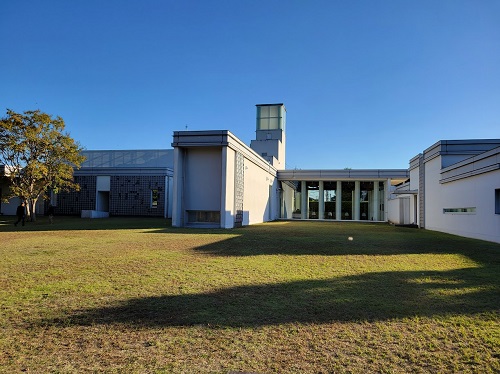
庭園から眺める白亜の「茂木本家美術館」
MOMOA (MOGI-HONKE MUSEUM OF ART) building viewed from its garden. |
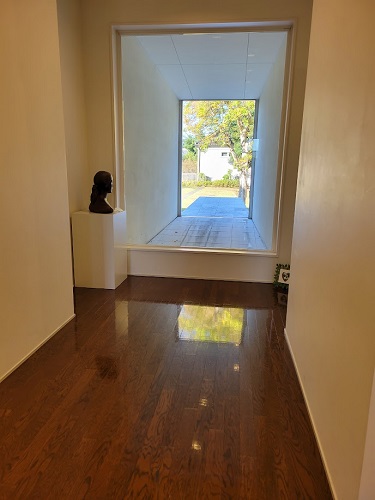
館内から庭園に向かう窓はそれ自体が絵画作品のよう。
A window facing the museum garden itself looks like a piece of art work. |
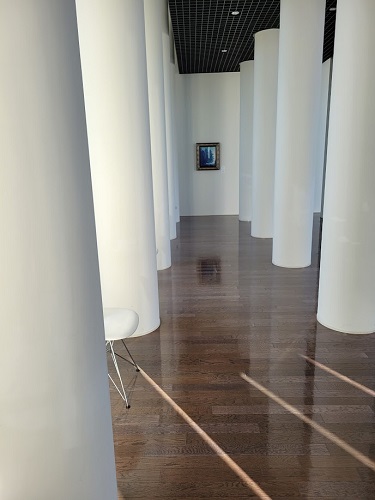
「コラムコート」と呼ばれる白い円柱(コラム)の並ぶガラス張りのスペース
A space called "column court" with white columns surrounded by transparent glasses. |

陶製のミニチュア犬の置物コレクション。
A collection of ceramic miniature dogs. |
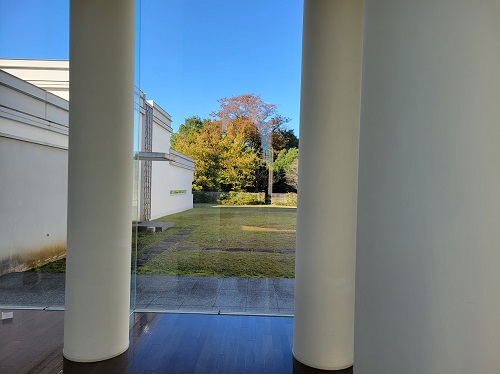 |
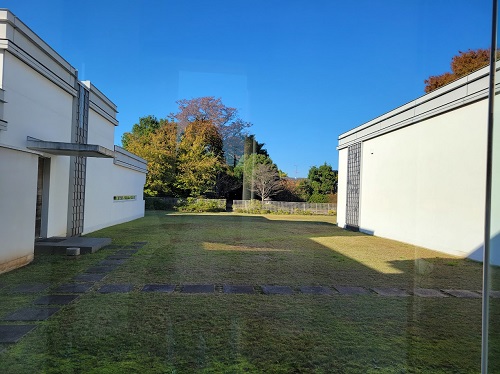
美術館庭園の眺め / A view of the museum garden. |

美術館庭園の眺め / A view of the museum garden. |

隣接する日本家屋をめぐる柿渋塗料を塗られた板塀。
A wooden wall of the neighboring house covered with persimmon tannin. |

隣接する日本家屋をめぐる柿渋塗料を塗られた板塀。
A wooden wall of the neighboring house covered with persimmon tannin. |
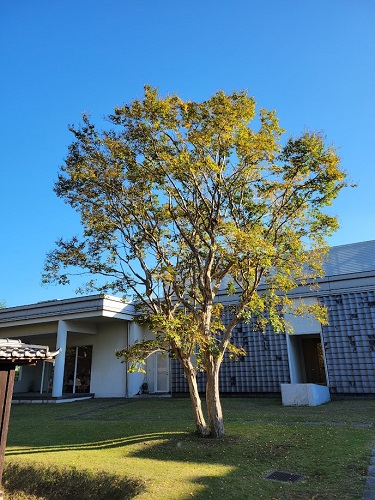
美術館庭園の樹木 / A tree in the museum garden. |
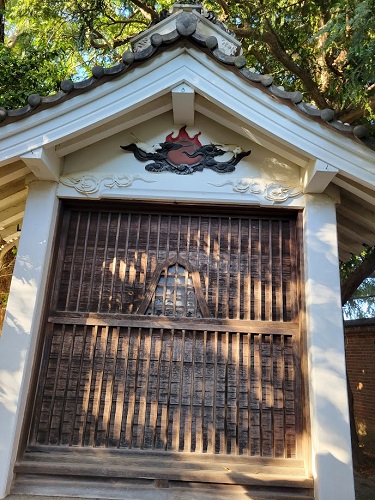
奥庭の祠のひとつ。
One of the small shrines in the back garden. |

11月は柿の実る頃。/ Persimmons are ripe in November. |
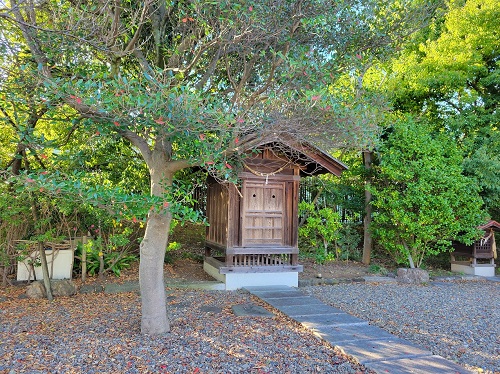
奥庭の祠のひとつ。
One of the small shrines in the back garden. |

祠の梁に彫られた「狐の嫁入り」の意匠。
A design engraved in the beam of a small shrine indicating "a wedding procession of foxes." |
 |

奥庭の祠のひとつ。
One of the small shrines in the back garden. |
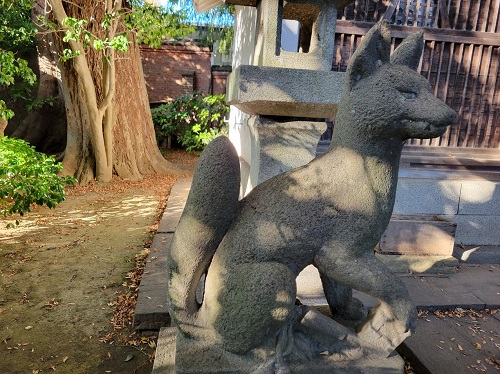
祠を守る狐の石像。
A stone guardian fox in front of a shrine. |
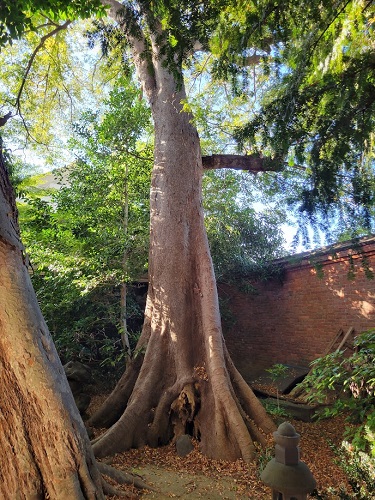
奥庭の古木 / An old tree in the back garden. |
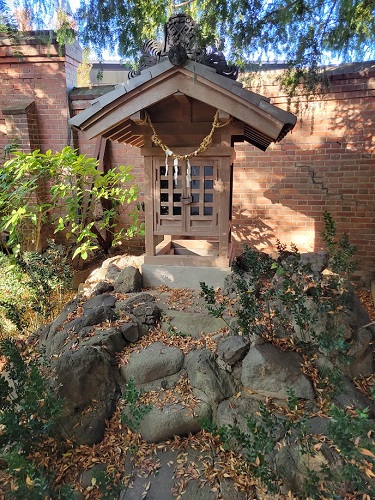
奥庭の祠のひとつ。
One of the small shrines in the back garden. |
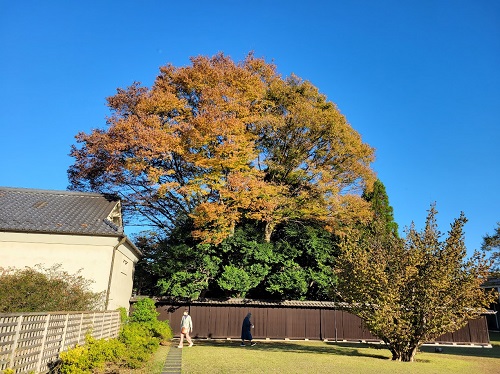
美術館を見学したのは晴れた秋の日だった。
We visited the museum on a sunny day in autumn. |

美術館の庭園と奥庭を隔てる扉
A gate between the front garden and the back garden of the museum. |

キッコーマンしょうゆ工場のタンクを遠望する路地
A lane looking over at the tanks of Kikkoman plant in a distance. |
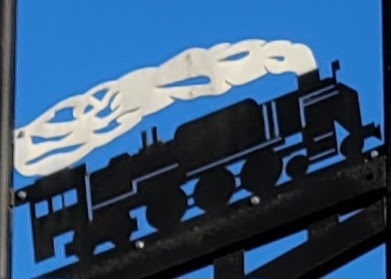
蒸気機関車が電柱の装飾に取り入れられている。(左の写真参照)
A locomotive is designed as an ornament of electric poles. (See the left photo.) |
| |
|
この写真集は別途田崎先生から配信されたWriters Studios所蔵のエッセイ、特別寄稿 散策思索35「工場と美術館―野田市を訪ねて―」(北田敬子著)に基づくものです。誤記・誤認にお気づきの方はどうぞ北田にご一報ください。(Thank you in advance for mailing to the author if you find any mistakes and/or misunderstandings in this document. Address: keiko@kitada.com) |
【参考サイト】
キッコーマンもの知りしょうゆ館ホームページ
Website of Kikkoman "MONOSHIRI SHOYUKAN"
茂木本家美術館ホームページ
Website of MOMOA (MOGI-HONKE MUSEUM OF ART)
Website of MOMOA in English
|